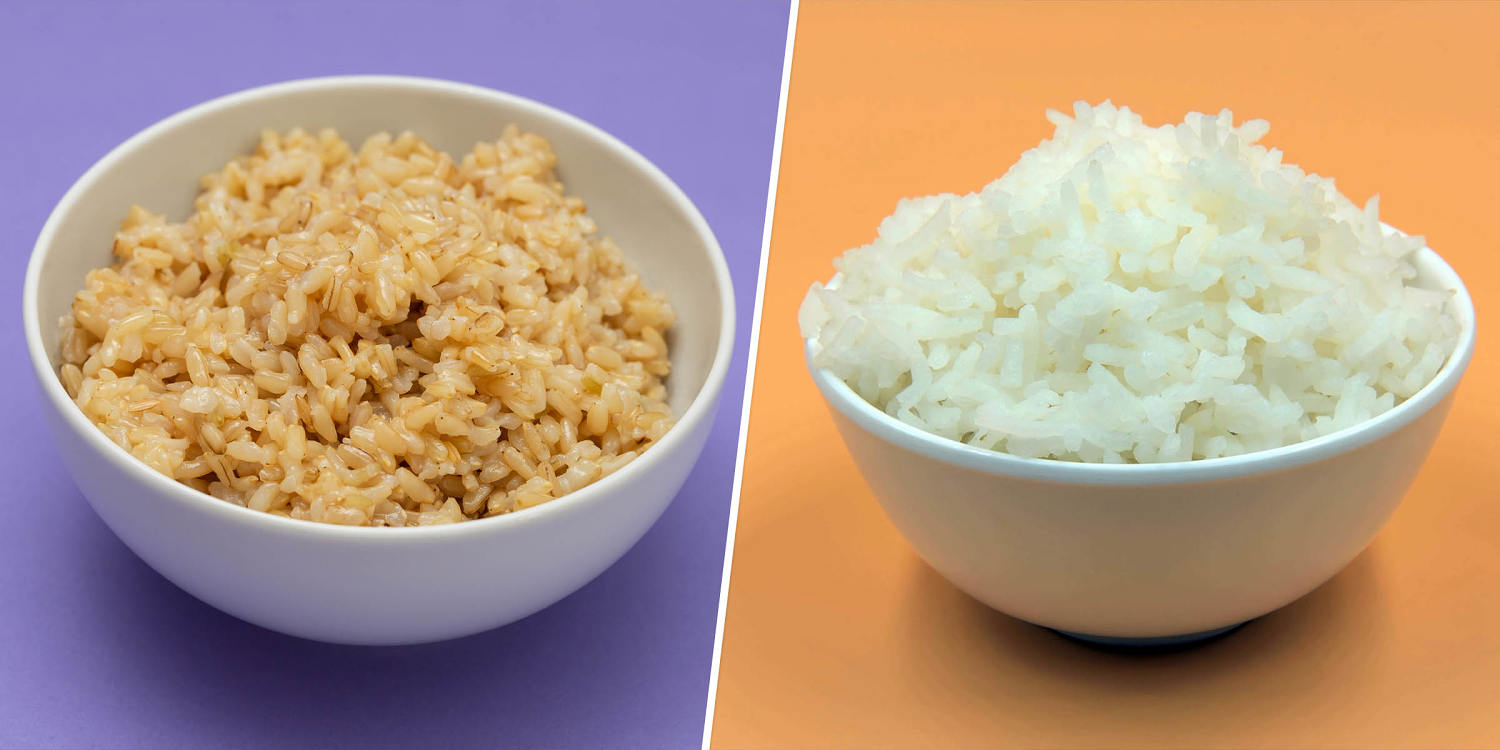Rice is a staple ingredient in an endless array of recipes, and it’s found in millions of pantries around the world, but not all types are created equal. And with so many varieties available on store shelves today, it can be a little confusing about how to decipher which variety of the grain is best — especially brown rice versus white rice. Eating brown rice is a great way to meet your daily whole grain needs.
Studies have shown that are a longevity food that can help extend our healthy years and lower cholesterol. also recommend that adults make whole grains at least half their total grain consumption. And rice is an easy — and tasty — way to get some of those servings.

But is there a ? According to , whole-grain rice varieties (like brown, red and black) are not only an affordable option, but they’re also rich in fiber, and important micronutrients, like vitamins B1 and B6, magnesium, phosphorus, selenium and manganese. But when it comes to finding the best rice for certain dishes, brown may not always be best. has also found that brown rice may be higher in certain toxins, like arsenic.
That's where white rice comes in. It's also got plenty of vitamins and minerals, is gluten-free and has plenty of resistant starch. Plus, it can have a stickier texture — important to many dishes, like sushi, rice pudding — and is better at absorbing flavors than brown rice.
Here's what to know about brown rice versus white rice. Rice is a grain that is the seed of a type of grass species called Oryza. Both brown rice and white rice come from the same plant, but they undergo different treatments that affect their appearance and nutrient density.
Brown gets its name from the color of the grain. It is a whole grain, meaning it is unprocessed and still has all three parts of the original grain: the bran, germ and endosperm. (Whole grain rice can also be black, purple and red.
) White rice, on the other hand, starts out as brown rice, but then the bran and embryo layers are removed, so only the white endosperm remains, according to Harvard’s . This process removes a lot of the nutrients, so they are sometimes added back in, creating a product known as "enriched" white rice. But only a portion of the original nutrients are actually added back in.
Some types of rice that can be either brown or white include: In terms of how to decide which to use when cooking, it depends on your health goals and what you are making. Both rice types are widely available and affordable. Brown rice tends to be denser and take longer to cook, where as white rice tends to be fluffier and take shorter to cook.
Brown rice has a "slightly nuttier taste and chewier texture,” chef , director of culinary at and previous program director at the , tells TODAY.com. Brown rice makes a great base for , as well as in dishes where a slightly nutty taste is appreciated, like a pilaf with roasted veggies.
While brown rice can be substituted in many dishes where white rice is used, it is not a good choice for dishes like puddings or risotto. White rice is more versatile than brown rice and can be used in basically any dish instead of brown rice, whereas the opposite isn't true. Because white rice absorbs flavor so well, many varieties work well for plethora of dishes like , and more.
Jasmine rice is beautifully fragrant and makes a perfect base for many Asian dishes with rich, savory sauces. And the starchiness in white Arborio rice is unmatched for making . “Brown rice is the more healthful choice (than white rice)," Sexton says.
It has a lower glycemic index, which means it's less likely to contribute to Type 2 diabetes, and more micronutrients and fiber. One cup cooked of contains: Some benefits of eating brown rice, largely due to its high fiber content, include: White rice is not as nutrient-dense as brown rice, but that doesn't mean it's unhealthy. In fact, white rice can be an important part of a well-rounded diet, especially if you're getting plenty of fiber from , and other foods.
“If fiber and whole grains are consumed from other foods (such as) , and veggies, then white rice can be incorporated into a healthy diet,” NBC News health and nutrition editor Madelyn Fernstrom says. One cup of cooked has: Some benefits of eating white rice include: Some studies have found that brown rice is higher than white rice in arsenic, a naturally occurring element that is also toxic. But the amount of arsenic in brown rice is unlikely to pose health concerns, found.
While the amount researchers uncovered in brown rice was higher than that in white rice, they concluded it still would not cause "long-term health problems, unless someone ate an enormous amount of brown rice every day for years," according to a press release. Black rice (also known as “forbidden rice”), along with purple and red rice, is just like brown rice in that it is an unprocessed grain so it maintains a lot of its nutritious value. In addition to the fiber, vitamins and minerals, the deep hues of these grains actually makes them healthier.
, the pigment comes from a plant phytochemical called anthocyanins, and it’s filled with antioxidants. “Puddings and desserts are the way to go with black rice,” chef , director of culinary operations at the Institute of Culinary Education, tells TODAY.com.
“It looks beautiful because of the color and it also gives a creamy texture.” On its own, black rice has a slightly nutty flavor akin to brown rice, so it’s also a great base for savory toppings. Wild rice, on the other hand, "is not wild, and it’s not rice — it’s the seeds of edible grasses found in North America,” Fernstrom explains.
This “rice” is a healthy choice for people looking to add some nutritious texture to salads or other sides because it holds up well when sauced. That heaviness, however, may overpower certain dishes where a hardier texture isn’t desired. Wild rice is also lighter in calories and carbs than brown rice and has more zinc, folic acid and vitamin E.
So while brown rice may get the credit as the most nutrient-rich rice, wild rice has a host of great benefits that shouldn’t be ignored. Whether you should opt for brown rice or white rice depends on what you're cooking and your health goals. Brown rice is higher in nutrients than white rice, a chewier bite and takes longer to cook.
If you don't have any digestive issues, you may want to opt for brown rice if you need more whole grains in your diet. It can reduce your risk of Type 2 diabetes, help with weight management and more. White rice, while lower in nutrients, still has plenty of important nutrients, is high in resistant starch (which keeps you feeling full) and is easier to digest.
So if you're having stomach issues or have a chronic gastrointestinal condition, you may prefer white rice. White rice is also fluffier and stickier, which lends better to many dishes, like puddings, risottos and more. Erica Chayes Wida is an award-winning journalist, food writer and recipe editor who helmed a local newspaper before joining TODAY's freelance team.
A mother of two, she loves singing, collecting old vinyl and, of course, cooking. Erica is forever on a worldwide quest to find the best ham and cheese croissant and brainstorms best over a sauce pot of bubbling pasta sauce. Her work has been featured on BBC Travel, Saveur, Martha Stewart Living and PopSugar.
Follow along on . Maura Hohman is the senior health editor for TODAY.com and has been covering health and wellness since 2015.
.
Health

Amid arsenic concerns, is brown rice or white rice better for health?

Brown rice vs. white rice is a common debate. Both are healthy foods but which is healthier? Experts explain the benefits of each and how to use them.















